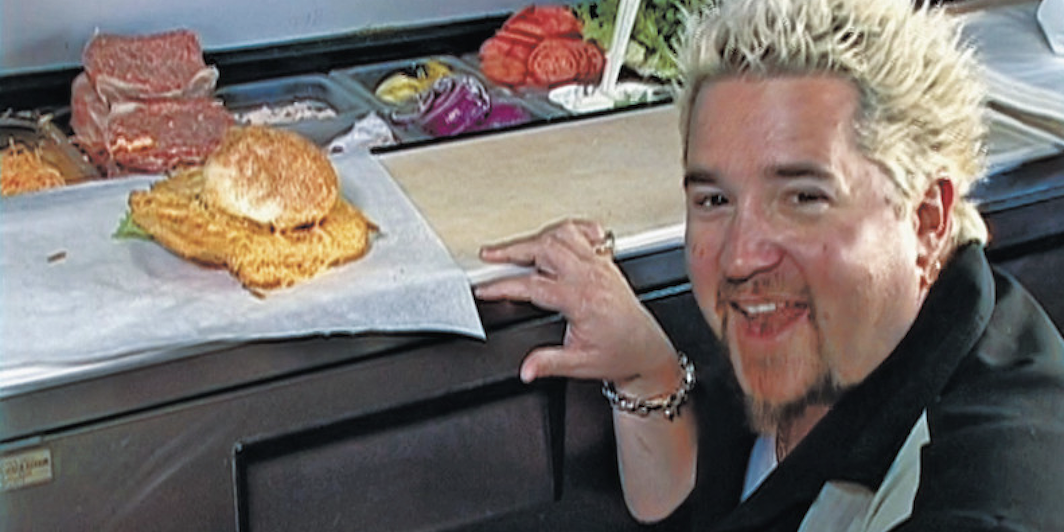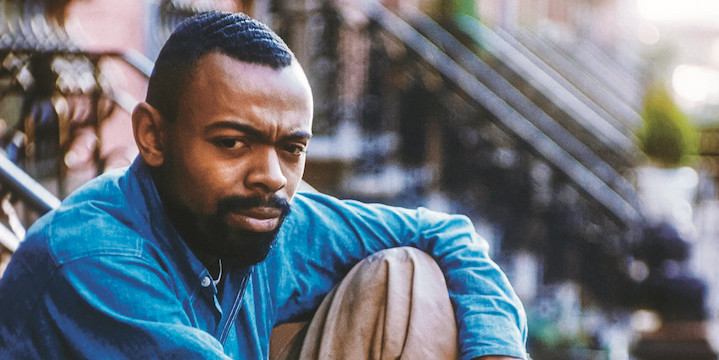IN 1990, WHILE COLLECTING PERSONAL PHOTOGRAPHS for their Ohio River Portrait Project, archivists at the Kentucky Historical Society came upon an amusing, near-century-old snapshot commemorating something called the “Tacky Party” of Ballard County. Seven turn-of-the-century young adults pose for a group portrait, looking as genteel and deadpan as a team at the beginning of a Family Feud episode. They first appear to be wearing the usual sorts of garments we might picture when we think of the early 1900s: hats piled high with ornamental flowers and ribbons; billowing, floor-length dresses with lacy, chin-skimming necklines. But upon closer inspection, the modern
- print • Dec/Jan/Feb 2022
- print • Dec/Jan/Feb 2022
Amiri Baraka, Newark, New Jersey, 1959. Burt Glinn; © Burt Glinn/Magnum Photos. BROOKS BROTHERS USED TO MAKE UNIFORMS FOR SLAVES, you know. It’s true. The company supplied the mid-twentieth-century Ivy League uniform of oxford-cloth shirts, boneless three-button suits, and chunky cricket sweaters primarily because they were known to make good clothes. (Die-hard partisans, however many […]
- print • Dec/Jan/Feb 2022
DWINDLING ENLISTMENT AMONG STUDENTS and deteriorating market share among consumers; confusion as to immediate method and cloudiness as to ultimate mission. . . . Professors of literature have good reason to feel insecure about the status of literature and literary scholarship. And, like many an insecure person, the discipline of literary studies has grown increasingly interested in and respectful of popular taste as its own popularity has declined. Between the Great Recession and 2019, the number of undergrads majoring in English shrank by more than a quarter, and it’s difficult to imagine the pandemic has reversed the trend. Meanwhile, over
- print • Dec/Jan/Feb 2022
DEPRESSION, FOR ALL THAT HAS BEEN WRITTEN ABOUT IT, remains in many ways a voiceless illness. If depression were an actor in a play, it would be one without words, its presence a reminder that psychic darkness isn’t invisible so much as carelessly—or, as it may be, willfully—overlooked. Since time immemorial, clinical depression—the kind that sometimes ends in suicide—has not been given its due as a legitimate ailment, with claims on our attention and concern every bit as much as cancer. Like many psychiatric conditions, including schizophrenia, the ratio between biological determinants and psychodynamic ones has never been firmly established,
- print • Dec/Jan/Feb 2022
IT TOOK ONLY A COUPLE MONTHS after moving to Memphis for me to realize I was living in a necropolis. You have Elvis’s Graceland temple by the airport; the solemn Lorraine Motel where Martin Luther King Jr. was murdered; a famous cemetery where Isaac Hayes and Sam Phillips are buried and—in case you’re still doubting my assessment—downtown’s hulking black Bass Pro Shops pyramid, where the redneck pharaohs await the endless hunting and fishing of the afterlife. Sometimes I’d feel I was walking not through a city made for the living, but a temple compound dedicated to gods that can’t hear
- print • Dec/Jan/Feb 2022
Shahzia Sikander, Pleasure Pillars, 2001, vegetable color, dry pigment, watercolor, and tea on wasli paper, 17 x 12″.© Shahzia Sikander/Courtesy the artist and Sean Kelly, New York/Collection of Amita and Purnendu Chatterjee. UPON HER ARRIVAL at the Rhode Island School of Design in 1993, Pakistan-born artist Shahzia Sikander was asked by an instructor if she […]
- review • December 1, 2021
Welcome to the Dec/Jan/Feb 2022 issue of Bookforum! In this edition, our writers pick the best books of 2021, Melissa Anderson delves into the diaries of Patricia Highsmith, Benjamin Kunkel considers how Amazon has changed the way we read, and much more. Read the issue online here, and consider subscribing or gifting a subscription with our holiday discount.
- review • November 30, 2021
In the 1982 documentary All by Myself: The Eartha Kitt Story, an unseen male interviewer asks the late singer and actress whether she would “compromise” for love. Kitt’s brow furrows, and she faces the camera. “Compromise?” she demands, “Compromising for what reason? . . . What is compromise?” Surely Kitt knew the meaning of the word, but she’s not seeking definitions here. Rather, her question—“What is compromise?”—fastens a severe and distinctly skeptical beam of light on the concept. Such scrutiny might lead us to the word’s darker resonances: to spoil or imperil. After all, there is risk in being too
- excerpt • November 29, 2021
While Flannery O’Connor’s example suggests the value of holding on to and interrogating the kind of anomalous details that don’t do enough work in early drafts, there are also those cherished elements we resist cutting that should probably go.
- print • Dec/Jan/Feb 2022
WHAT IS IT WE WANT from literary biographies? A portrait, surely, of the subject, something beyond the profiles and interviews that they grinned through whenever one of their books appeared. Perhaps even a good story. A prominent biographer once told me that there would never be a biography of Don DeLillo because all he ever did was sit at his desk and write his books: there’s no fun for a biographer in mining that kind of life. On the other hand, new books seem to appear every year on the short life of Sylvia Plath, the narrative thread always winding
- print • Dec/Jan/Feb 2022
IT WAS A HALTING, haunted year. The pandemic sort of ended, but still required constant vigilance, inflicted mass tedium, and ruined our fall plans. Just like autofiction! There were inconclusive congressional inquiries into the Capitol riot and the Bad Art Friend. The Paris Review got a new new editor, which is exciting. Giancarlo DiTrapano died, […]
- excerpt • October 28, 2021
A couple of hours from Beirut, if you’re fortunate with the traffic, you come within touching distance of the Syrian border. A course northward of that brings you through the Beqaa Valley and into Baalbek. We clambered through the palimpsest of ruins in Baalbek—the Assyrian, Roman, Byzantine, and Muslim ruins—and, wary of the proximity to the hot war just a few miles away, wondered if this is how people get kidnapped. That evening, coming back from the ruins, we thought we’d stop in Broummana, and see Edward Said’s grave.
- excerpt • October 26, 2021
After reading Walden, I like to rip it up. Not the book itself, but the sentences and passages that Thoreau so painstakingly put together. When I do, I make it a party, or at least a group affair. On various occasions I have convinced a small group of people to choose sentences at random (some short, some Thoreauvianly long) and then to read those sentences aloud, simultaneously, at various different tempos and modulating volumes, while standing in a circle. The result is an aural montage: some words and phrases lost in the river-rush of words, some bobbing to the surface,
- excerpt • October 19, 2021
At the outset of his influential 1952 essay, “The American Action Painters,” Harold Rosenberg announced:
- print • Sept/Oct/Nov 2021
THE PRIMARY PROBLEM with freedom is that it’s impossible for everyone to have at the same time. Even circumscribed freedoms intersect, impose, and oppose, as conflicts about speech, masks, and vaccines remind us daily. “If and when we ascertain that our well-being is linked to the behavior of others, the desire to impugn, control, or change them can be as fruitless as it is intense,” writes Maggie Nelson in On Freedom: Four Songs of Care and Constraint, her attempt to probe the question of “how to forge a fellowship . . . that does not reflexively pit freedom against obligation.”
- excerpt • September 30, 2021
Fiction in the Age of Amazon is the symbolic provision of more—above all, of more various and interesting “life experience” than can be had by any mortal being, let alone one constrained by the demands of work and family. It is a commodification of this experience, shaped to the reader’s limitations and recurring therapeutic needs.
- print • Sept/Oct/Nov 2021
AN AWFUL DISCOURSE now heralds spring. It goes by “no kink at Pride.” Seemingly concocted on 4chan as one of their loosely coordinated Operations, it has been propelled for the past few years beyond the imageboard by earnest young queers and crypto-religious moralists, both keen to prevent the nonconsensual sight of leathermen. In 2020, arguments about parade logistics reached a fever pitch. The fact that, due to the coronavirus, parades were more likely to be canceled that year was no consolation. There was a more abstract problem: the question of sexuality in public life was at stake.
- print • Sept/Oct/Nov 2021
Beverly Peele and Tyra Banks photographed by Arthur Elgort for Vogue, 1993. © Arthur Elgort FELIX KRÄMER, A GENERAL DIRECTOR OF DÜSSELDORF’S MUSEUM KUNSTPALAST, writes in the foreword to Captivate!: Fashion Photography from the ’90s that “galleries, institutions, studios and the people who work in both the public and private spheres are struggling for survival” […]
- print • Sept/Oct/Nov 2021
Alexis Rockman, Jellyfish II, 2016, watercolor and gouache on black paper, 44 x 30″. Courtesy the artist This year’s Intergovernmental Panel on Climate Change (IPCC) report, a survey of more than 14,000 studies, confirms that we are now in the management phase of the climate crisis: it can’t be prevented, only mitigated. What role can […]
- print • Sept/Oct/Nov 2021
WHILE WANDERING AROUND the Jewish Museum’s haunting exhibition “Louise Bourgeois, Freud’s Daughter,” curated by the artist’s former literary archivist Philip Larratt-Smith, I stopped at a melancholy sculpture called Ventouse, 1990, a double-decker hunk of hacked, chipped black marble that resembles a sarcophagus. The coffin is topped by protruding glass cups, their rounded ends lit from within by electric bulbs.



















